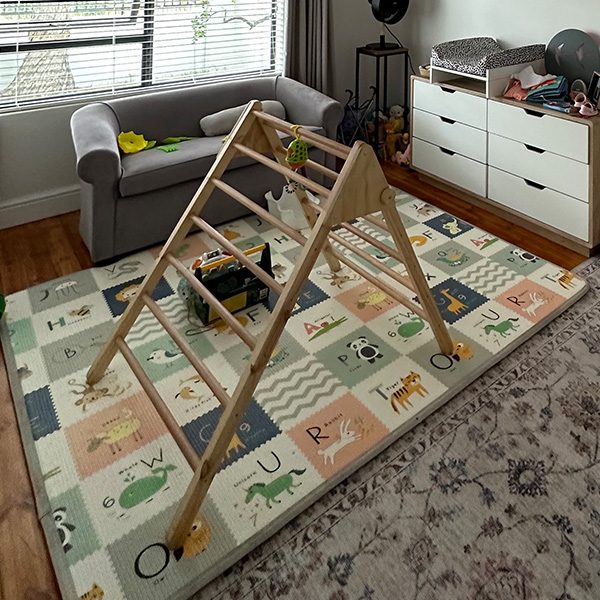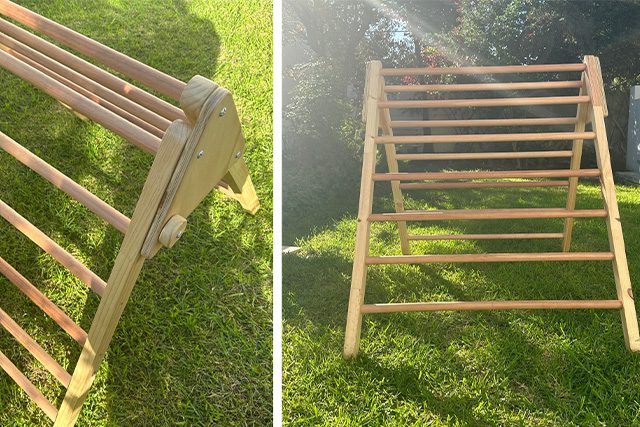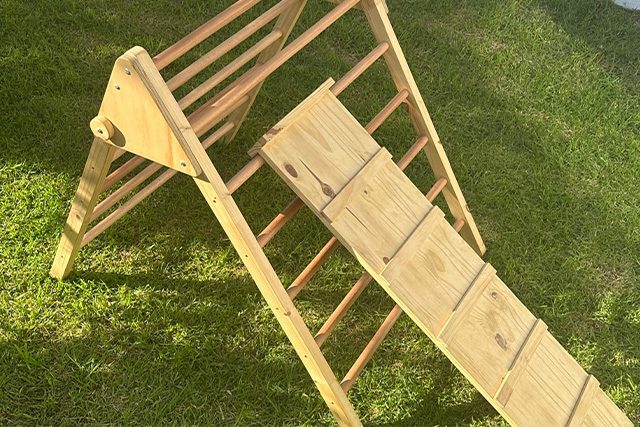The Almighty Pikler Triangle

The almightly Pikler Triangle is one of most valuable and versatile pieces of equipment in the world of early childhood education and parenting.
Developed by Hungarian pediatrician Dr. Emmi Pikler in the early 20th century, this simple yet ingenious structure has become a staple in many homes, preschools, and daycares worldwide.
Its unique design fosters both physical and cognitive development in children, allowing them to explore, learn, and grow in a safe and stimulating environment.
Here are 6 points of why this product is a must have for a young child:
1. Physical Development
The Pikler Triangle is primarily designed to support and promote physical development in young children. Its triangular shape encourages kids to climb, balance, and navigate various heights and angles. Climbing helps strengthen muscles, improve coordination, and develop gross motor skills, all of which are essential for a child’s overall physical development.
The various rungs and platforms of the Pikler Triangle provide age-appropriate challenges, allowing children to progress at their own pace. As they master each level, they gain a sense of achievement and build their self-confidence. This not only enhances their physical abilities but also nurtures their emotional and psychological well-being.
2. Sensory Stimulation
Beyond its climbing and balancing aspects, the Pikler Triangle offers a rich sensory experience for young children. The different textures, materials, and surfaces they encounter while exploring the structure stimulate their tactile senses. The creaking of the wood, the sensation of gripping the rungs, and the feel of the smooth platforms all contribute to their sensory development.
3. Creative Play and Imagination
The Pikler Triangle’s open-ended design encourages imaginative play. Children may transform it into a fort, a castle, a spaceship, or any other imaginary world they can conceive. This fosters creativity, problem-solving skills, and cognitive development as they engage in pretend play and explore various scenarios.
4. Social Interaction
The Pikler Triangle is not only meant for solitary play; it also facilitates social interactions among children. Multiple kids can play together, taking turns, and even cooperating to create shared play experiences. This promotes social skills such as communication, cooperation, and conflict resolution, laying a foundation for positive social relationships.
5. Adaptability and Longevity
One of the most appealing aspects of the Pikler Triangle is its adaptability to suit different age groups. Younger children may use it for climbing and crawling, while older kids can turn it into more challenging obstacle courses. Its sturdy construction ensures that it can withstand years of use and can be passed down to younger siblings or generations, making it an eco-friendly and cost-effective investment for families.
6. Parent-Child Bonding
When parents engage in play with their children on the Pikler Triangle, it becomes an opportunity for bonding and connection. Parents can guide their child’s exploration, provide encouragement, and share in the joy of their accomplishments. This shared experience fosters a strong sense of trust and attachment between parent and child.
The Pikler Triangle serves as an invaluable tool in early childhood development, offering a wide range of benefits that extend beyond physical growth. Its impact on sensory stimulation, creativity, social skills, and parent-child bonding makes it a cherished addition to any child’s environment. As we continue to recognize the importance of open-ended, child-led play, the Pikler Triangle remains a timeless and cherished resource in nurturing the full potential of young minds.


